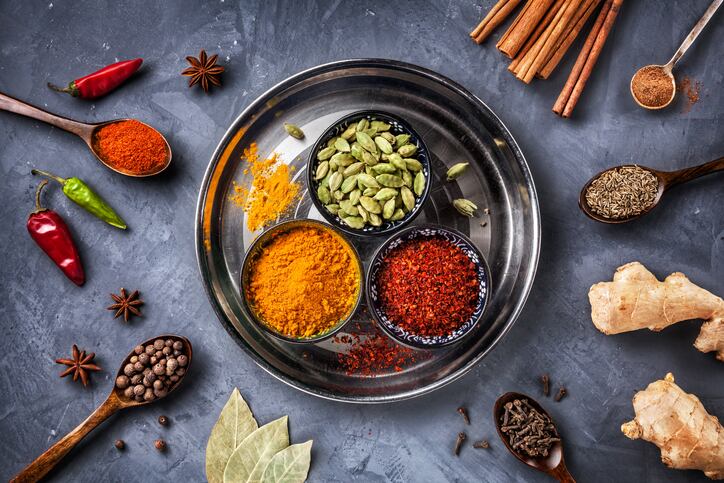“Because of all the uncertain times in 2020 and the pandemic, we know that staying in is the new going out and it has really become a reality for consumers searching for ways to elevate the at-home experience,” Dylan Thompson, senior marketing and consumer insights manager at Symrise, told attendees during a webinar Jan. 28 when the company unveiled emerging trends to watch in 2021.
He explained that consumers are embracing comforting foods and beverages to provide security, and offer familiarity, but they also looking for new twists or flavors that complement the tried-and-true as a way “to travel with their taste buds, rather than their passport during the whole pandemic.”
In response, he said, chefs are bringing a sophisticated twist of different spices and flavors to popular profiles and dishes people know and love – and in doing so holding the door open for CPG brands to follow their lead and safely incorporate new flavors as well.
Three break-out spices that Thompson said he is watching emerge could provide fertile ground for product development, including star anise, marjoram and shichimi.
Star anise and marjoram aren’t necessarily new, but they are gaining traction in the mainstream in new ways for a bringing a depth of flavor that is at once familiar and exciting.
For example, Thompson said star anise, which is similar to clove or cinnamon but with a hint of licorice, is becoming a key spice in comforting drinks and desserts where it can hold its own against heavy, creamy options to “bring out a warm and cozy feeling.”
Like star anise, marjoram also offers a slightly milder flavor profile compared to some of its better-known complementary herbs, like oregano and thyme, and is used to magnify flavors in classic comfort foods like pizza, pasta and burgers.
Potentially less familiar than star anise or marjoram, shichimi is a Japanese spice blend that brings many of the same attributes to the table as the other two emerging flavors, Thompson said, explaining that chefs and consumers are gravitating to it for its warmth in salty dishes.
As a combination of red chili pepper, ground sansho, roasted orange peel, sesame seed, hemp seed, ginger and nori, the blend offers a zesty fruit flavor with a bit of warmth that plays well in savory pancake, mac and cheese and other pasta salads and in seafood and tacos, according to Thompson.
“Shichimi is increasingly showing up as a creamy complement to hearty and indulgent foods,” he added.
Mexican power herbs expand adventurous consumers’ boundaries
Growing demand for culinary tourism also is opening the door for what Symrise calls “Mexican power herbs,” which are still very cutting-edge in the US but offer a complex and robust flavor profile that can be “tough to pin down,” Julia Gorman, digital marketing specialist at Symrise Flavor North America, said.
While still niche in the US, Gorman said she is watching the rise of three traditional Mexican herbs in dishes and beverages at restaurants, including pipicha, hoja santa and Mexican mint Marigold.
Of these, pipicha may offer the most surprise. Gorman described its flavor as a cross between cilantro and mint, which she acknowledges might not sound good but which offers a punch of flavor to dishes that is balanced out with a hint of lemon and anise.
A bit more comforting, but still novel to Americans, is hoja santa, which Gorman says lends in savory dishes and tart drinks a slightly peppery aroma and flavor, along with anise, eucalyptus and nutmeg.
The herbal flavors in hoja santa are gaining traction more broadly as consumers increasingly accept the idea of functional food, which has exposed them to more medicinal and botanical flavors.
Finally, Gorman said, Mexican mint marigold is “finding its way into more sweet and fruity menu items” thanks to its robust licorice flavored leaves that can infuse, garnish and complement both beverages and foods.
Recognizing that these three flavors may still be a bit far out for many Americans, Thompson recommends pairing them with something that is familiar, like avocados or salsas or beverages with common fruit overtones. This allows consumers to try something new without fear they will hate it because they know they like the more familiar pairing.




